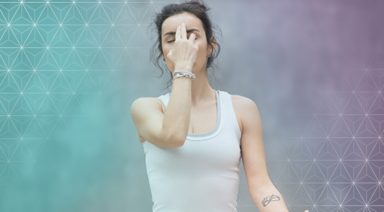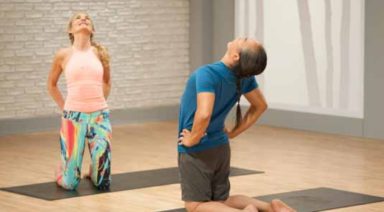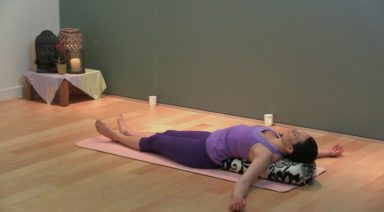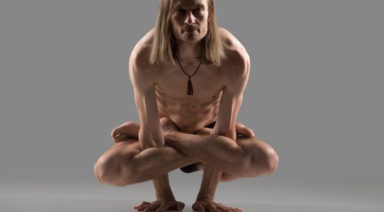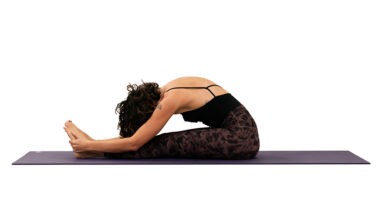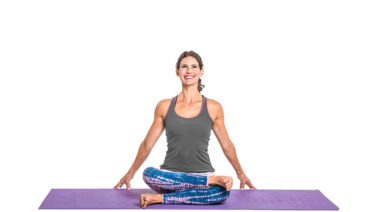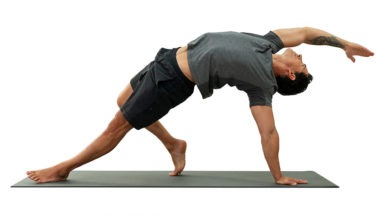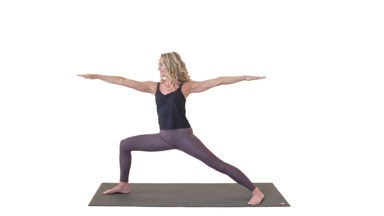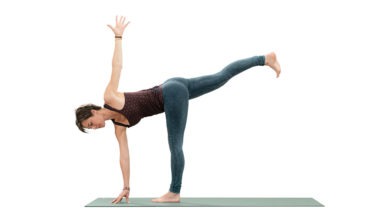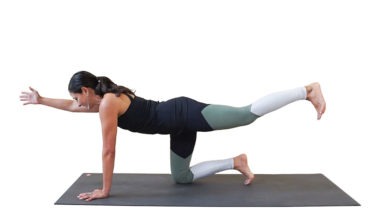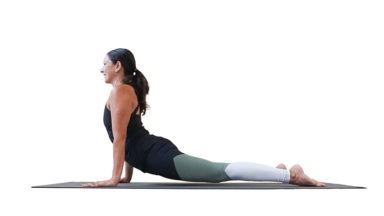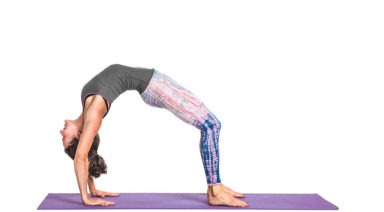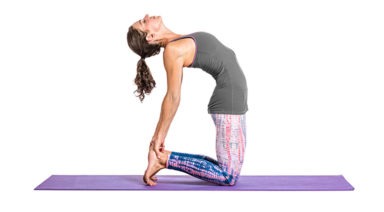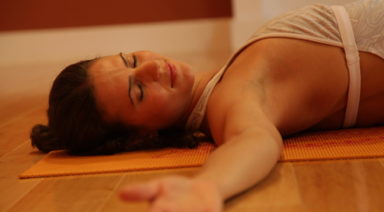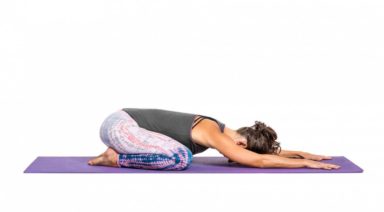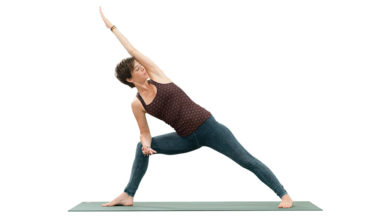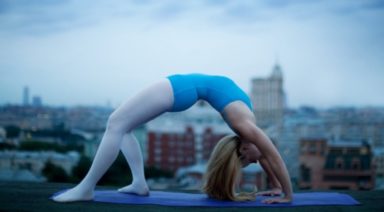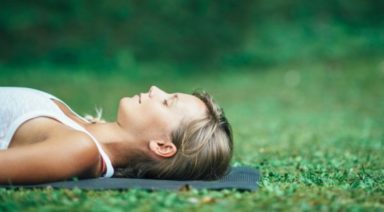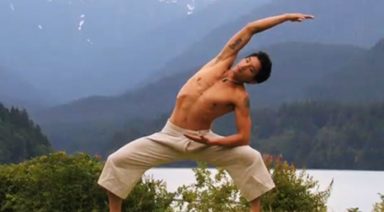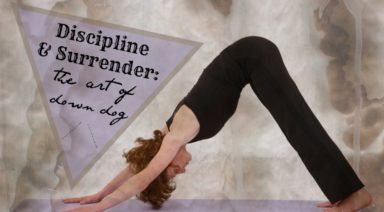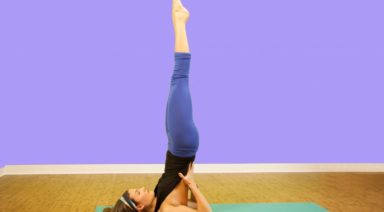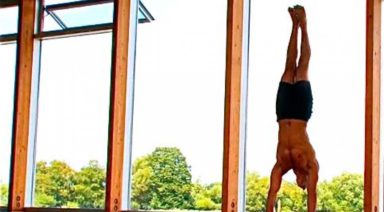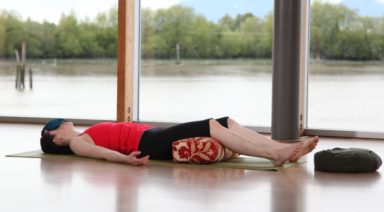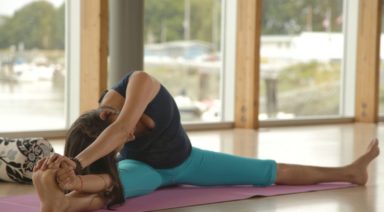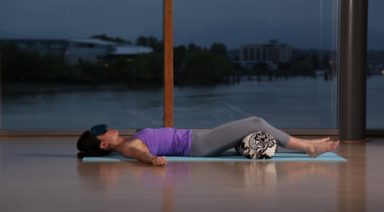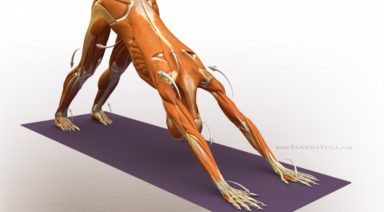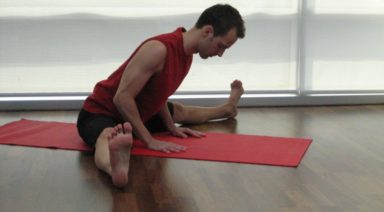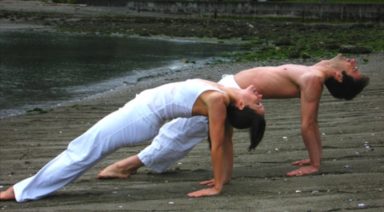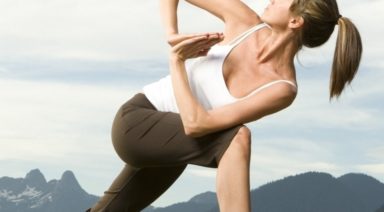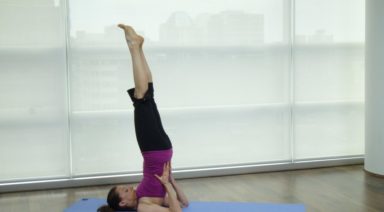Top Yoga Poses for Headaches
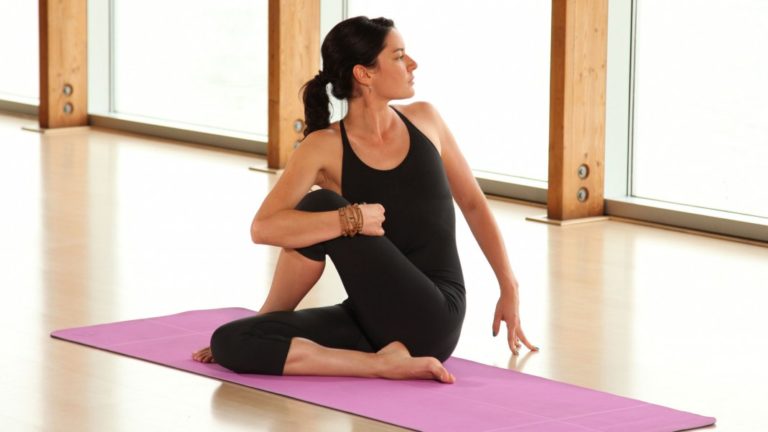
Yoga can be a beneficial therapeutic tool for relieving headaches brought on by muscle tension and stress. The majority of headaches originate from muscle stiffness and imbalances emanating from the neck and upper back. When headaches set in, using a series of restorative yoga exercises can greatly relieve both the cause and symptoms. Here are our top yoga poses and exercises that naturally treat headaches.
1. Cat Pose: The flowing motion of breath and spine helps release tension from the neck and upper back while also pouring refreshing energy through the body and mind.
2. Seated Twists like Half Twist: Besides increasing circulation throughout the entire length of the spine, the twisting motion in the upper spine (cervical region) often alleviates tension coming from the scalene muscles of the neck (anterior aspect).
3. Chest Openers like Yoga Mudra Arms: Much of the tension in the back body is a result of muscle dominance from the front body (called Upper Cross Syndrome). Expanding the chest and front shoulder muscles helps break down muscular imbalances and frees the tension coming from the neck.
4. Eagle Arms: This simple crossed arm pose can be done in Mountain Pose or any natural seated posture. This back expander can reach well into the mid and upper back targeting problematic muscles around the shoulder blades and the base of the neck. Take time in this arm pose to breath slow and full into the upper back and insure that you perform this arm pose on both sides.
5. Simple Neck Stretches: Gently move through the various muscle fiber lines by allowing your head to float down to one shoulder with gravity, down across the chest and into the other side – repeat with a natural, unforced motion. Avoid letting the head fall back-keep the motion in a half circle from one shoulder to the other. Pause where you find extra areas of resistance.
6. Childs Pose: A perfect restorative yoga pose that slightly inverts the body. A gentle flow of extra blood circulates into the head helping relieve tension. With the legs slightly separated, you can easily settle into deep core and back breathing to encourage a flood of circulation to reach deep into the body. Note that the head and neck should be absolutely comfortable. If needed, keep you arms forward or bend the elbows and rest the forearms by your chest/under your shoulders so the palms face up-this will greatly unload any pressure from the neck.
7. Two Knee Reclining Twist: Unlike our seated twists, this reclining twist can be far more restorative and held longer to bring deeper focus into relaxing the nervous system while the chest expands and rejuvenates the spine. Give extra attention to releasing the shoulders into the mat to again release dominance of the shoulder and chest muscles.
8. Legs Up The Wall Pose: This highly beneficial inverted pose is great for developing hamstring flexibility and for improving circulation in the lower limbs. For headaches, the extra flow of blood to the brain and the restorative support can be deeply relaxing and nourishing.
9. Anuloma Viloma (Alternate Nostril Breathing): The aim of alternate nostril breathing is to restore balance to the energy systems. With balance, we find release and calm. This yoga breathing exercise is easy to do for all levels and targets the nervous system by slowing brain waves, calming the mind and purging stress.
10. Relaxation Pose: After doing a series of restorative yoga poses, take some time to simply relax and release in Savasana. Turn the focus away from the symptoms of your headache and settle into the sensation of mental and physical release. You may find a light eye pillow helpful in moving tension/pressure out of the eyes and forehead. Increase your comfort by placing a bolster under the knees and a thin pillow under the head. To complement the chest openers and reclining twists, lay with the arms open to the sides/palms facing the ceiling.
Take advantage of restorative yoga exercises to treat your headache. Before jumping for a chemical medication that usually just masks the symptoms, see how these key yoga poses can first work to naturally eliminate the cause of the headache and free you from the discomfort arising from imbalances and stress.
Yoga Breathwork for Quick Sinus Relief
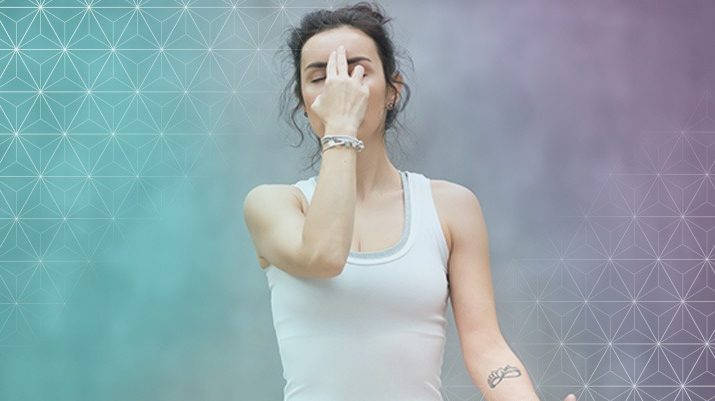
4 Minute Pranayama Kapalbhati Breathing Tutorial
Though it may seem counter-intuitive, breathing is another practice that can alleviate sinus discomfort. Try the following practices with a calm and relaxed demeanor, focusing on keeping your prana moving smoothly. You may wish to blow your nose, or better yet, use your neti pot before you try these exercises.
Belly Breathing
Lie on your back with your knees bent and your hands on your belly. Breathe deeply into the belly, focusing on expanding the belly like a buddha, then draw the breath and energy up through your ribs, chest and shoulders. Exhale the same way, deflating your belly, chest and shoulders, and squeezing all the air out of your belly. Find your own rhythm.
Calming Breath
Sit comfortably. Bring your right hand out in front of you, palm facing you. Fold your index and middle fingers into the palm. Place your ring finger on your left nostril to close it off. Breathe into the right nostril for two counts. Close off the right nostril with the thumb and hold the breath for two counts. Release the left nostril, exhale for two counts. Close off the left nostril and hold the breath for two counts. Try visualizing a square. If it feels uncomfortable to hold the breath, simply pause instead. Increase the count as you become comfortable, making sure that you are doing equal counts for each action.
Breath of Fire
In this practice, hold your hand over your navel, and practice forcefully exhaling out the nose repeatedly. Your belly should be pumping in and out. The force of the exhale will naturally draw in a new breath, so there is no need to inhale consciously. You may start this practice by gently panting, but it is important to eventually speed up the pace of this breath in order to stoke the “fire” of the breath.


